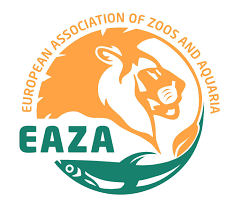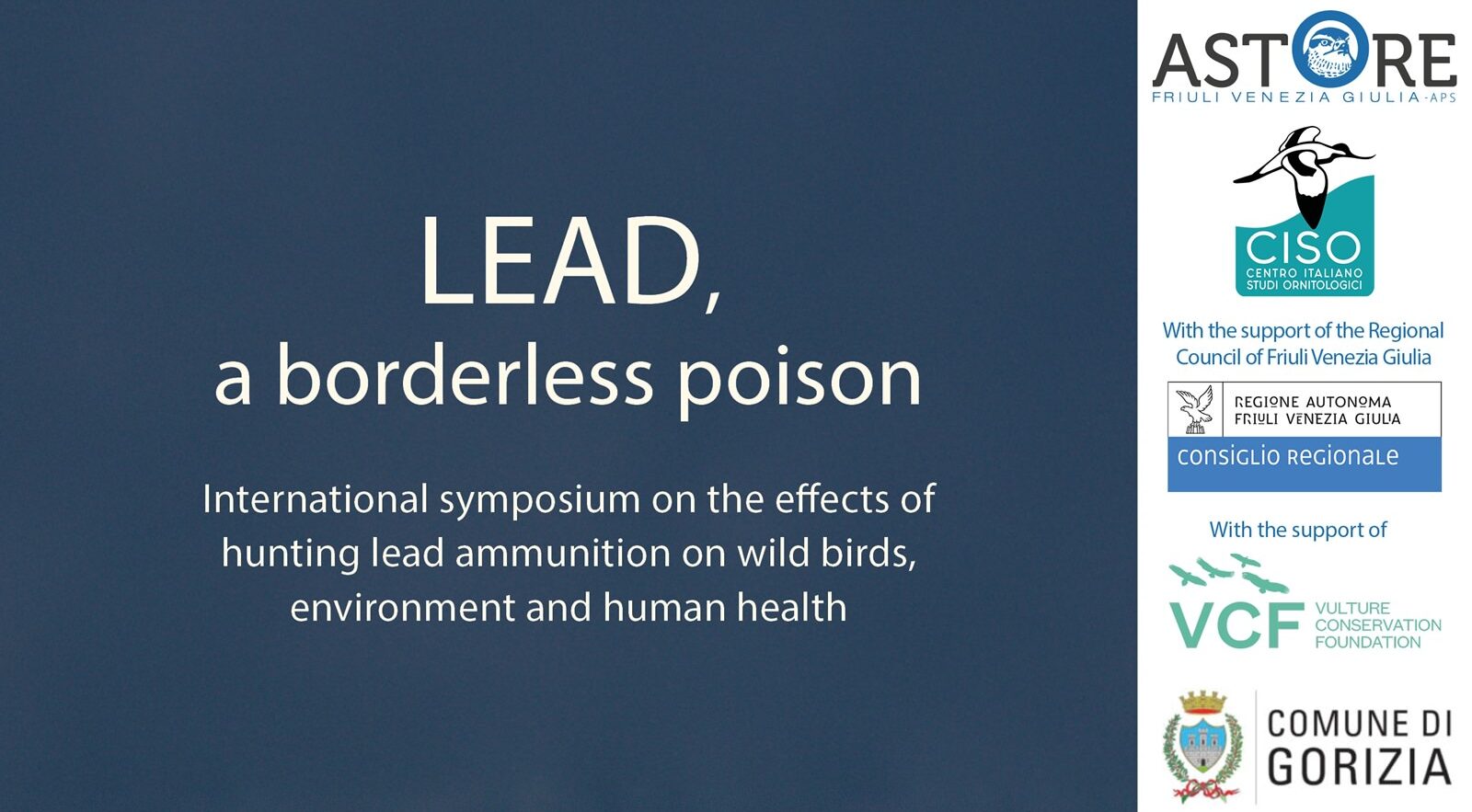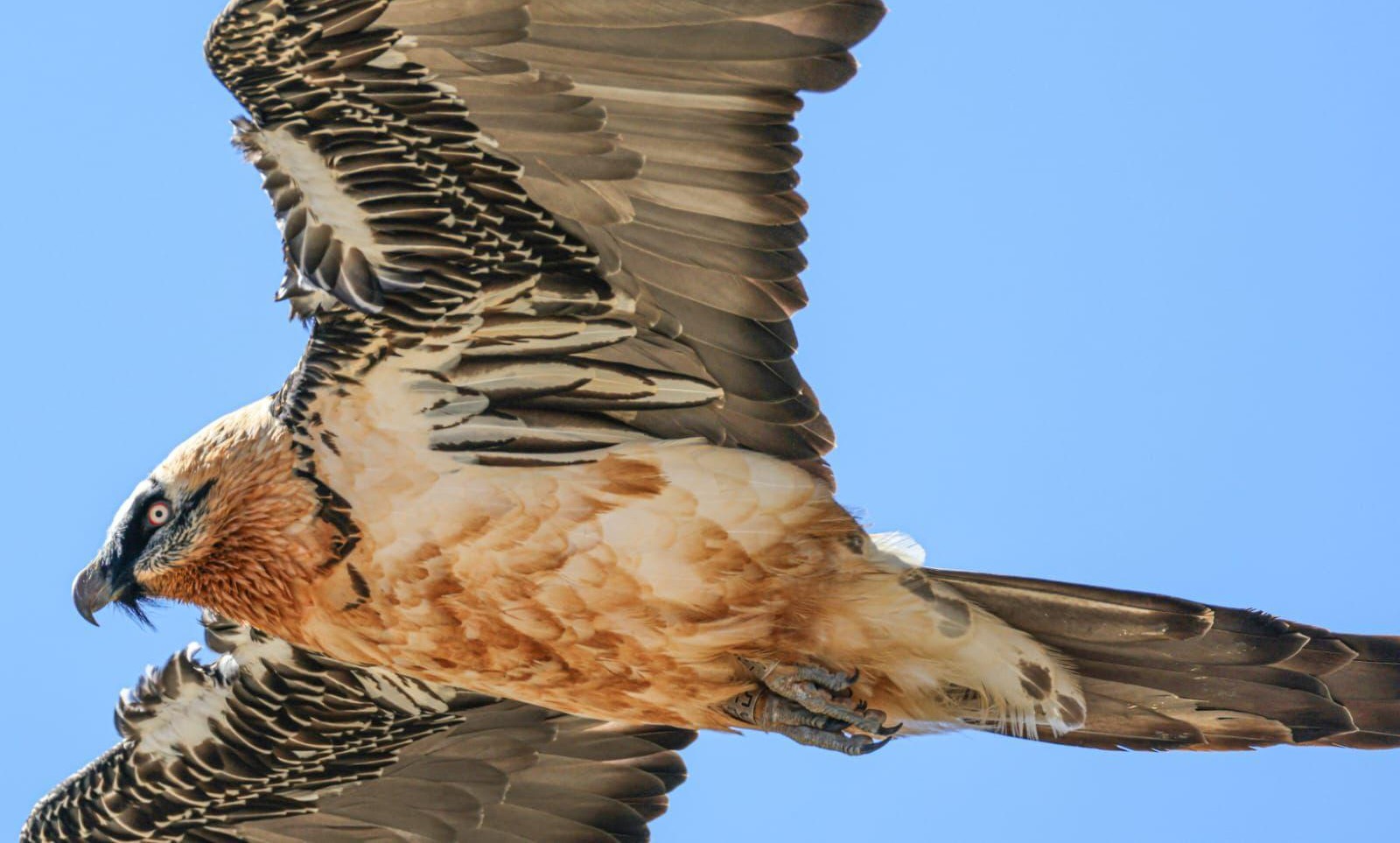At the heart of efforts to save Europe’s rarest vulture, the Vallcalent Bearded Vulture Breeding Unit stands as one of the most vital centres in the Bearded Vulture EEP. This extensive network—coordinated by the Vulture Conservation Foundation (VCF) on behalf of EAZA—unites over 40 zoos, private collections, and specialised centres, all working together with a common goal: to breed Bearded Vultures in captivity for conservation.
To date, the EEP has successfully bred 717 Bearded Vultures in captivity, with 426 of them released into the wild across Europe. And here’s a remarkable detail: Since 2017, these releases have been coordinated from Vallcalent, making it an indispensable part of this continent-wide effort.
Now, as Vallcalent marks its 20th anniversary, it’s the perfect moment to get to know some of its most iconic residents.
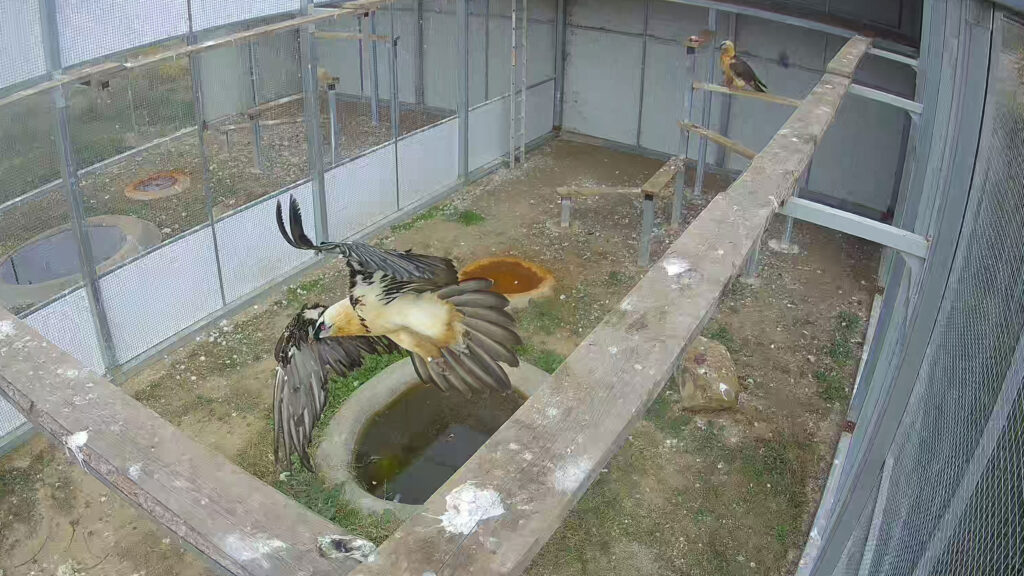
Two broken hearts, One new beginning
Let us introduce you to Tejo, a 24-year-old Bearded Vulture (Gypeatus Barbatus) with rare Greek genes, and Mesa, his 20-year-old partner, is a unique blend of Pyrenean and Asian lineages.
Mesa came to Vallcalent after two tragic losses at her previous home in Zoobotánico Jerez. Her second mate passed away from West Nile virus. Tejo, meanwhile, was grieving his long-time partner, Dama—a dominant female with a fiery personality and questionable parenting instincts. Together, Dama and Tejo had produced 24 chicks… many of whom had to be raised by others due to Dama’s rough handling.
So, the VCF team had an idea: what if these two lonely hearts gave it another go—together?
A cold start with zero sparks – and then a surprise
Let’s just say… It wasn’t love at first flight. For over a year, Tejo and Mesa coexisted without drama—but also without connection. They built separate nests, ignored each other, and gave the caretakers nothing but sighs.
But then, January 2022 arrived. Out of nowhere, the ice cracked. They started mating.
Mesa laid her first egg on 20 December 2022 … which Tejo accidentally broke three days later. Whether it was nerves, confusion, or instinct from past trauma, we may never know.
But Mesa wasn’t giving up. She laid a second egg on 30 December, which the team wisely moved to safety but later it turned out to be infertile. Then came a third egg on 15 January. This time, the chick (BG118) hatched but had to be transported to Guadalentín due to construction near the aviary. The chick is still in Guadalentín and doing well.
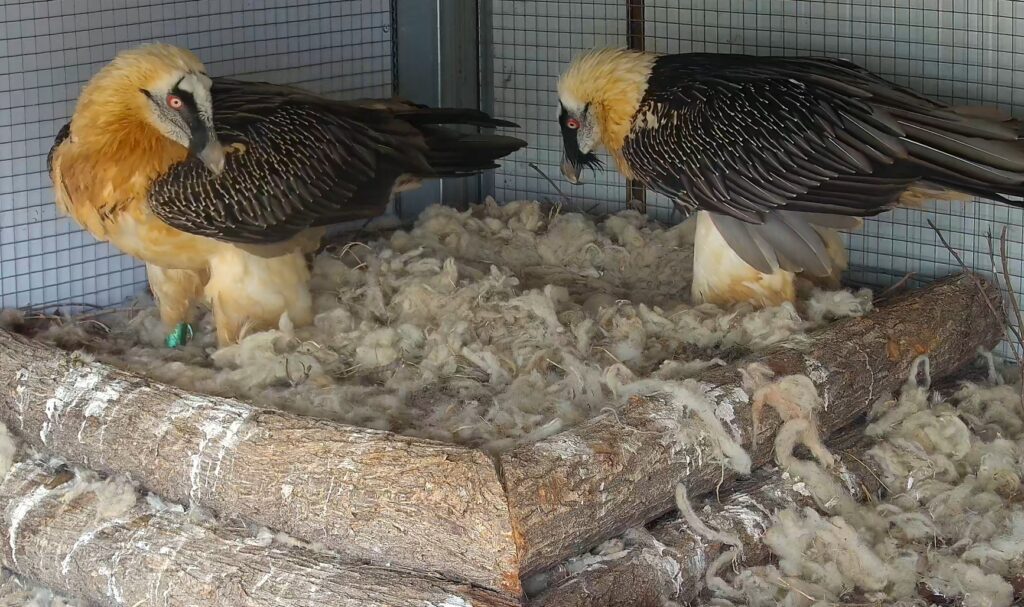
Improving step by step: The 2023–2024 breeding season
Last season, Mesa and Tejo surprised everyone again—this time by being the first pair to kick off breeding. Mesa laid her first egg on 10 December and second one on 20 December.
The second egg hatched on 10 February, resulting in a healthy female chick (BG1205). She was raised by Tejo. Mesa had to be removed from the nest after the chick was temporarily taken out of the nest for medication—when returned, Mesa reacted aggressively.
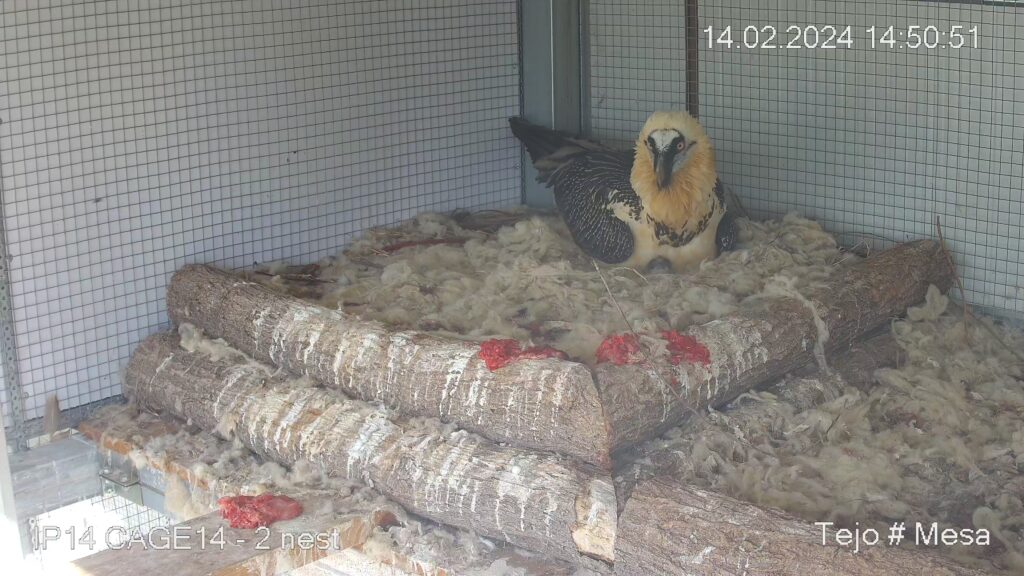
She is still at Vallcalent—and she’s already happily paired! Her partner is BG1179, a young male from the 2023 clutch of Joseph and Marie Antoinette.They were originally destined for Parco Natura Viva in Italy, but due to a bureaucratic saga, the move was not possible after all.
And in the end that was good! The two clicked instantly—lots of preening and lots of bonding. They’ve already had their West Nile vaccinations and are showing great promise. It’s proof that it’s important to keep the young birds together.
The momentum continues in 2024–2025 breeding season
This season, the breeding success continues. Enter the stage BG1276—a chick with a genetic resume worth celebrating. Hatched on 12 March 2025, this little one is the third descendant of Tejo and Mesa.
Just three days after hatching, BG1276 was fostered by the reliable duo BG662 Sedundino and BG680 Torla, who had already proven their parenting skills last year. Now, the chick is thriving in their care.
And here’s the exciting part: BG1276 is going wild! She’ll be the first chick from this pair to be released in the wild, heading to Sierra Nevada in Andalusia between 6–10 June.
Usually, the first four offspring of a new pair are kept in captivity, but with this year’s lower breeding success—and because her genetic lines are already well represented—we’ve decided to release her in the wild.
We look forward to her release and hope the breeding and parenting success of this genetically valuable couple will continue in the next seasons!
Vallcalent Specialized Breeding Unit
The Centro de Fauna Salvaje Vallcalent houses the Vallcalent Bearded Vulture Breeding Unit, operating since 2005 through a partnership between the Vulture Conservation Foundation (VCF) and the Catalan Government. Home to 32 (+3 chicks at this moment) birds, Vallcalent plays a vital role in producing genetically important chicks, rehabilitating injured vultures, and providing foster care for birds that cannot breed naturally.



